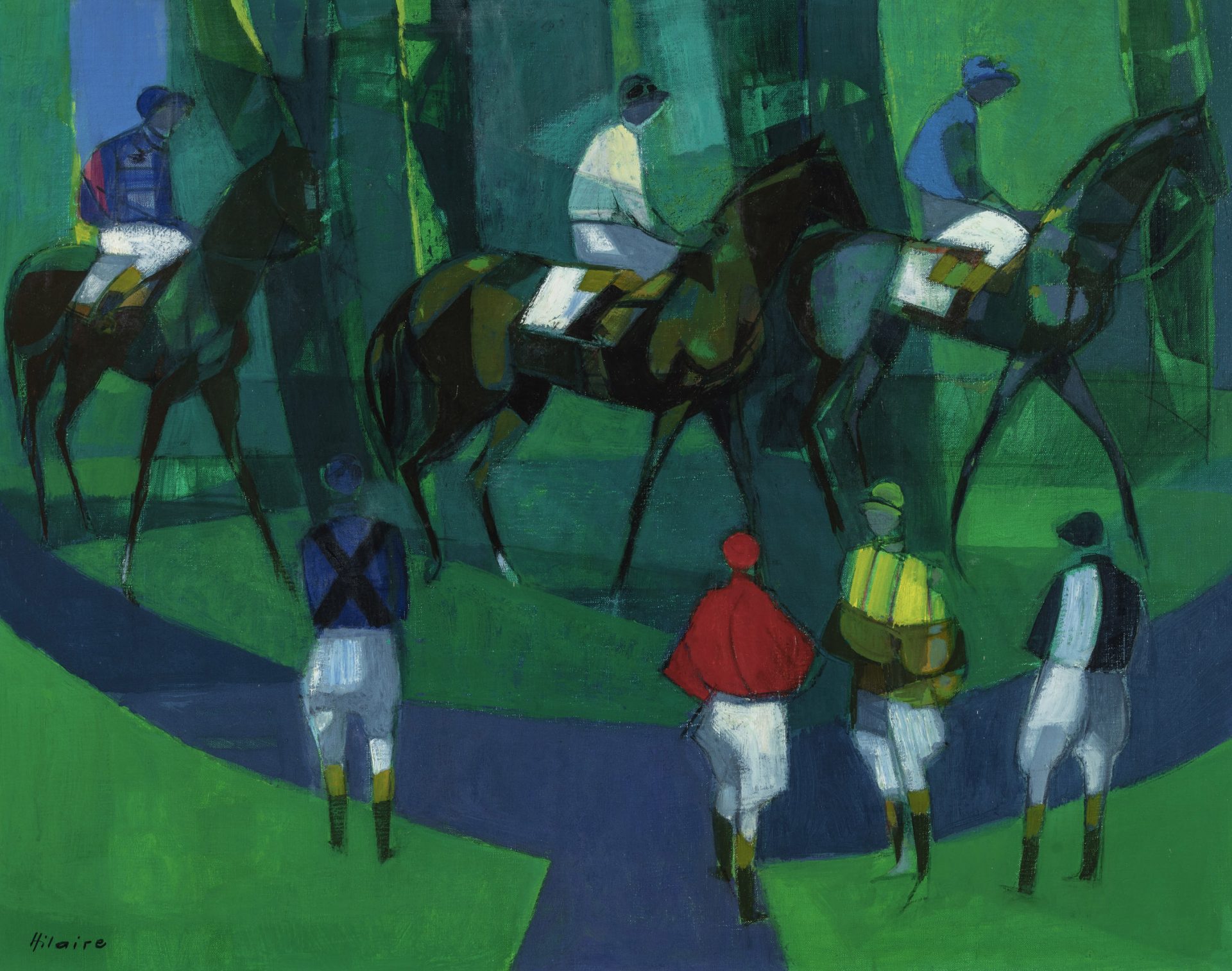Hilaire, Camille
2 augustus 1916 - 7 juni 2004
Biografie: Camille Hilaire
Camille Hilaire was a French painter and weaver from Metz. He attended the École des Beaux-Arts in Paris during World War II and was also tutored by André Lhote.
Hilaire began painting from a young age. Already at fifteen, he discovered the work of Albrecht Dürer in the Metz city library and began making copies of it. Some drawings he had hung up in a bookshop drew the attention of Jean Giono and Nicolas Untersteller, the director of the École des Beaux-Arts in Paris. It was thus that he enrolled at Beaux-Arts.
Thanks to a scholarship, Hilaire travelled around Spain and Italy in 1933 and 1934 and drew inspiration from the art he encountered. Both his painting and tapestry express the beauty and diversity of the places through which he travelled.
He was drafted into the army and participated in the campaign of France, was taken prisoner, escaped and returned to Paris in early 1941. Condemned to secrecy, he enrolled under a false name at the École des Beaux-Arts in Paris during the Occupation.
In 1942–1943, while remaining at Beaux-Arts, he also came under the tutelage of the Cubist artist André Lhote, with whom he became friends, and soon after his assistant. Hilaire's painting reveals influences from Cubism but without the rigidity typical of the early years of the movement.
He was then appointed professor of Beaux-Arts in Nancy, where he taught from 1947 to 1958, and then Paris until 1968. He was awarded the Prix de Venise in 1948 and the Prix de la Casa de Velázquez in 1950. He held his first exhibition in Paris in 1951 at the Gallerie Valloton. He then exhibited at the preeminent international art fairs in Geneva, Cannes and Deauville.
Camille Hilaire is subtle in his composition. He did away with efficient structures, he held power with colour and achieved a wonderful, consistent sense of calm, amplitude and greatness by translating patterns and elements, which never prevented him from expressing a burning passion for creating and sharing. His nudes were remarkable, with perfect curves, coiled with charm and set in a context in which their sensual fullness imposed itself with provocative grace. As for his landscapes, Camille Hilaire could determine the structure without apparent constraints, overlaying a fresh, spicy green that is so characteristic of them. Thus, nature and elements they become the pretext upon which the artist "pushed" the colour to get the effect felt. As for his tapestries, his job as a graphic designer and his willingness to explore are mingled in splendid works that draw attention by virtue of their technical execution of pure harmony and that have just as surprising an outcome as the artist's lithographs.
One of the interior walls of the canteen of the collège Georges-de-La-Tour [fr], at place du Roi-George [fr] in Metz, is decorated with a bucolic fresco painted by Camille Hilaire, which is impressive in its size and beauty. It was saved during modernization of the building.
Over time, a dozen monographs have been devoted to him as well as documentaries and films. He leaves behind a large body of work, stamped with the seal of seduction. Hilaire has strongly influenced the French painters of the mid-twentieth century.
He was married in 1934 to Anne-Marie Reslinger, with whom he had a daughter, Jeannine. In 1942, he remarried with Simone Jance, a fellow student of art, with whom he had four children: Christiane, Pascale, Claude, a painter going by the name of Hastaire, and Florence, painter and sculptor with the pseudonym Cantié-Kramer.

Signatuur
